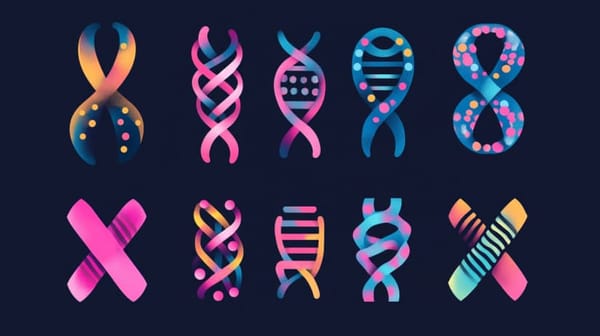So many people are concerned about muscle loss on a dry fast that these type of questions get asked pretty frequently. It's sort of a human condition to want to have it all, so that even when you are undergoing something as drastic as a dry fast for your health, you're still looking at ways to have your cake and eat it too. In this case people really worry about maintaining their gains. It's understandable, to a certain degree.
You will lose approximately 0.3 lbs of muscle per day on a dry fast, while losing about 0.9 lbs of fat. You will also be losing about 1.2 lbs of water weight at the same time. This is an approximation and it is based on days after the initial 36 hours and once you are in moderate ketosis. In the first 36 hours you can lose anywhere between 2 to 10 lbs of water weight, depending on multiple factors including body type, age, sex, and activity levels.
I'll try to answer the questions relating to "muscle loss on a dry fast" as best as possible and guide you in a way that will allow you to make your own decisions on how much you will take muscle preservation into consideration during your next dry fast. However, I will ask one thing of you. Please remember why you are here, and that dry fasting is dangerous if done incorrectly and aggressively. Sometimes that means sitting back and letting the healing forces of your body do what they do best.
Does dry fasting lead to significant muscle loss?
When compared to water fasting, dry fasting loses much less muscle. During a water fast you can expect approximately a 50-50 split on muscle and fat loss. On a dry fast, you can expect something like 25-75 muscle and fat loss. That is a massive difference. Especially when you take into consideration that a dry fast takes much less time to achieve similar and better results than a much longer water fast. The simplified way of looking at it is that one day of dry fasting is equal to three days of water fasting. It's worth noting that the extent of muscle loss during a fast can be influenced by several factors, including the individual's starting body composition, the total duration of the fast, and any physical activity undertaken during the fast. Moreover, the body adapts to fasting by increasing its use of fat as a primary energy source, thereby sparing muscle protein.

Don't believe me? Take a look at one of my 9-day dry fasts day-by-day photos. I know I reuse this photo way too many times, but I'll really work on taking some new ones on my next fast ;) After a few days of refeeding and gently re-entering exercise, I was back to lifting the same amount of weight as prior to the fast.

When it comes to muscle loss there are a few key mechanisms to consider:
- Glycogen Depletion: Muscles store energy in the form of glycogen, which is bound to water. In the early stages of fasting, the body taps into these glycogen reserves for energy. I've talked about this in earlier episodes/chapters, and if you remember, each gram of glycogen is attached to three grams of water. You can think of it in a simplified way as a 1:3 relationship. As the glycogen is utilized, the water it's bound to is lost, this is why you see such a massive drop in weight in the first few days. This massive water loss also means that water from the muscles disappears and this may make it seem like you have lost more muscle than you think. This is also one of the reasons why it is not recommended to work out at a higher intensity during a dry fast.
- Protein Catabolism: After glycogen stores are depleted, the body starts to break down protein from muscles to produce glucose for essential functions, especially to fuel the brain and red blood cells through a process called gluconeogenesis. I'll talk about this more later. Just remember that there is a big difference between water and dry fasting when it comes to this. Dry fasting is highly preferred for muscle sparing while getting even better health benefits.
- Decreased Muscle Protein Synthesis: Fasting decreases the rate of muscle protein synthesis, the process your body uses to rebuild and grow muscle tissue. This is partly due to reduced insulin levels, which play a role in muscle growth. Insulin levels are correlated to MTOR and growth, while low levels are correlated to AMPK activation. There are some tricks that we can employ here, such as using Berberine strategically. However, the best thing we can do here is practice cyclical training by managing periods of AMPH activation with periods focused on mTOR activation. This is naturally done with intermittent fasting, but in our case, imagine a week of fasting and refeeding, followed by two weeks of muscle building.
- Hormonal Changes: Extended fasting affects several hormones. Cortisol, the body's main stress hormone, can rise, leading to increased protein breakdown. Conversely, anabolic hormones like insulin-like growth factor-1 (IGF-1) and testosterone, which support muscle growth, can decrease. With dry fasting we experience an intense cortisol increase, much bigger than with water fasting, so based on that we'd expect even more muscle breakdown. Why isn't this happening? The answer is unknown, but from a logical scientific perspective, it's clear that there are homeostasis mechanisms that get activated in a dry fast that negate the cortisol protein breakdown.
- Reduced Physical Activity: People on extended fasts often reduce their physical activity, either due to decreased energy or as a deliberate choice to conserve energy. Reduced muscle usage can contribute to muscle atrophy over time. This makes sense, and it is another reason why dry fasting is so much better than water fasting. Water fasting takes at least 3 times the length to achieve comparable results. This means 3X the time for the muscles to atrophy from reduced physical activity and reduced protein consumption.
How does the body prioritize muscle preservation during a dry fast?
For this let's start off with the Zebra finch research paper.

This study observed zebra finches in three types of situations. One was a control group that received both water and food, the second was a water-fasting group, and the third was a dry-fasting group. They observed that all 3 groups had good water saturation in their body composition, indicating that metabolic water was being produced in the dry-fasting zebra finch. Enough to keep its metabolic processes functioning. The great discovery was that the dry-fasted zebra finches had much more muscle left compared to the water-fasting finches. This indicated that there are mechanisms in dry fasting that preserve muscle mass. This goes hand in hand with my own personal results, as well as hundreds of dry fasting testimonials claiming very low muscle loss on a dry fast. So yes, during a dry fast, the body prioritizes muscle preservation. What could be the mechanisms though?
- More Rapid Ketosis: One theory is that dry fasting accelerates the onset of ketosis compared to water fasting. When the body enters ketosis, it primarily burns fat for fuel, sparing muscle tissue. Faster entry into ketosis might mean less muscle catabolism.
- Increased Growth Hormone Production: Fasting, in general, is known to increase HGH, claims that dry fasting does so to a greater extent are primarily theoretical, but it does make logical sense that a more powerful fast would trigger an increased load of HGH production. Personally, I have noticed that if you safely exit a fast and begin a moderate exercise program that very lightly ramps up, you can gain muscle extremely quickly. But please beware of working out intensely during the refeed as the dehydrated muscles will be prone to tears and sprains very easily.
- Cellular Autophagy: Autophagy is a cellular "clean-up" process where cells break down and recycle damaged components. While both dry and water fasting can stimulate autophagy, dry fasting does so more intensely, which might have protective effects on muscle tissue. This is yet again a logical concept theory of mine, and the idea behind it is that because of this intense autophagy, our body has more building blocks, including amino acids circulating in the blood, thereby protecting our muscles from breakdown.
- Shorter Fasting Duration: Shorter fasting durations might inherently result in less muscle loss, leading to the perception that dry fasting is more muscle-sparing. While I do believe dry fasting inherently spares more muscle on an hour-to-hour basis, a potential theory also posits that because you're doing it for less time then obviously you will lose less muscle.
- Prioritized fat burn: Saving the best for last. Because hydration is so important, fat cells are prioritized through a process called lipolysis. Fat gets turned into glycerol and fatty acids, these then get converted into energy and ketones. Both of these reactions generate water upon full breakdown and oxidation.
Can you engage in resistance training while dry fasting without risking muscle loss?
Resistance training is not advised during a dry fast because you are already losing mass quite quickly. Even though most of this is water loss, the early stages of any fast have quite a bit of muscle loss. This muscle is needed to produce both glucose through gluconeogenesis, which is produced from protein breakdown into amino acids like glutamine and supplies the body with necessary components for day-to-day functioning. The early phase is called the post-absorptive phase, and this is where you will lose most of your muscle mass on a dry fast. Once you hit the 48-hour mark on a dry fast, your fat loss will outpace your muscle loss, and your body will start to preserve muscle mass much more efficiently.
During the first two days of a fast, go for light resistance training if your goal is to preserve more muscle. If you engage in resistance training while dry fasting you do risk increasing muscle loss because of how little amino acids are circulating during deep ketosis. So stay away from it after 48 hours. Any sort of workout during extended fasting will cause reduced recovery. Your body lacks the immediate nutritional resources to repair and build muscle, so you will be breaking more than you can rebuild.
What strategies can help minimize muscle loss during a dry fast?
Getting through the dehydration phase quicker and getting into the acidotic crisis faster. The dehydration phase is also called the post-absorptive phase. You can read all about the fasting mechanisms here, Fasting Mechanisms | Understand Ketosis and Starvation. It's the time between your last meal and glycogen depletion. Glycogen is a form of glucose that is stored in both your liver and muscles and is a very fast source of energy. Glycogen depletion takes approximately 36 hours. You'll notice that as the glycogen gets depleted, gluconeogenesis starts to slowly ramp up alongside lipolysis. Lipolysis is the breakdown of fat molecules. This means that the body realizes about halfway through glycogen loss that we're going to need to start burning proteins and fats to anticipate the coming starvation mode.

During dry fasting, you can imagine compressing some of these lines. Because of the need for water, ketosis ramps up much quicker, and therefore gluconeogenesis doesn't need to reach as high rates of process. When it comes to strategies to minimize muscle loss, it means you'll need to reach this burst of ketosis as soon as possible. Personally, I don't think it's wise to attempt to speed it up with sauna use and intense exercise because there are possibilities of overdoing it and putting yourself into a dehydrated state of shock. Letting your body naturally move into it is already pretty stressful, so why exacerbate it? However, if you're insistent on min-maxing the situation, you can do some forms of light exercise on top of walking. Just be ready for a bit more fatigue and intense water cravings.

This means a very low carb diet will minimize muscle loss if done correctly before entering a dry fast. You will be optimized for protein and muscle building, and you will be in a pretty intense but moderate ketosis. These elements will catapult you into the acidotic crisis much faster. So instead of struggling for 72 hours, you may only struggle for 36-48 hours before you pass the hump. You may actually not struggle at all. If you go through the ketosis shock during your preparation period, that means less struggle during the actual fast. This will mean that your body will fire up the fat-burning boosters and transition into that 25:75 muscle loss to fat loss ratio.
AMPK limiting strategies
This is theorycrafting territory, but there are technically ways to minimize muscle loss like trying to limit AMPK activation. AMPK which is the shortened version of AMP-activated protein kinase is an enzyme that acts as a cellular energy sensor and regulator. It's usually activated during energy restricted states like fasting. So trying to limit it is sort of trying to go against the mechanisms of fasting. AMPK's role is to help cells generate more energy during the conservation stage, so it makes sense that AMPK is necessary for mitochondrial health. It also promotes fat breakdown and increases insulin sensitivity.
The ways of minimizing AMPK activation so that it doesn't break down as much muscle can include things like low-intensity exercise. This actually synergizes quite well with dry fasting because you should never do high intensity exercises during a dry fast unless you are doing a one day death fast (coined by cole robinson) and looking for unhealthy amounts of water weight loss in a short amount of time.
Low-intensity exercise is probably the only thing that I could suggest in this situation, considering most other ways of limiting AMPK go against dry fasting's core tenets and would most likely cause some negative impacts. Things like amino acid supplementation, electrolytes, and certain medications that stimulate mTOR over AMPK.
Is there a specific duration of dry fasting that poses a higher risk of muscle catabolism?
Yes, when you reach an underweight BMI you are entering territory where your muscles will start getting eaten (catabolised) since there is a shrinking limited source of adipose fat tissue. Here's information collected from Cahill's Starvation paper, and Dr. Jason Fung about muscle breakdown from obese vs lean patients.
A person with a Body Mass Index of 20 (borderline underweight) will derive almost 40% of energy needs during prolonged fasting from protein. Compare that to a person with a Body Mass Index of 50 (morbidly obese) who may only derive 5% of energy from protein stores. Once again this demonstrates our body’s inherent ability to survive. If we have stores of body fat, we use them. If we don’t have those stores, we don’t.
Exactly how much protein is needed during fasting really depends upon the underlying condition. If you are obese, then you will burn more fat than protein. If you are quite lean, then fasting may not be so beneficial, as you will burn more protein. This seems rather obvious, but our body is really quite a bit smarter than we give it credit for. It can handle itself during feeding and during fasting. How exactly the body is able to make this adjustment is currently unknown.
During prolonged fasting, fat oxidation accounts for approximately 94% of energy expenditure in obese subjects, compared to only 78% in lean subjects. Protein oxidation accounts for the remainder of the energy, since there is almost no carbohydrate stores left in the body after the first 24 hours or so.
There are other differences between lean and obese subjects, too. Lean subjects increase their ketone production much quicker than obese. This is easily understood. Since lean subjects burn a proportionally higher amount of protein, they switch over the fat metabolism much sooner than obese subjects, which will have the effect of sparing protein.
Other than all of this, it's the early phase before fat burn accelerates that is what you should focus on when trying to preserve muscle. Do light resistance training during the first 24-48 hours only. Once you run out of triglycerides, you run out of water and energy. At this point your body is forced to consume the remaining muscle proteins to maintain energy, to have building blocks, and to create water inefficiently. We'll talk about this more in the next question.
How long can the body sustain muscle mass without protein intake during a dry fast?
Maintaining muscle mass during extended fasting is a concern for many, and the body's response can be quite complex. You have to take into consideration the different stages of fasting and how it pertains to gluconeogenesis and ketosis. Your body can enter a state of ketosis within 1-2 days on a dry fast and between 2-4 days on a water fast. Very powerful ketosis is achieved around day 3 on a dry fast and day 7 on a water fast. Understanding this is key. The deeper the ketosis, the more muscle will be preserved. Under regular circumstances and short fasts, gluconeogenesis gets most of its glucose from proteins and amino acids. However, once you enter deep ketosis it's been shown that the becomes much more muscle sparing and uses up to 50% less amino acids. Instead it focuses on glycerol from fat cells. The brain, which typically relies on glucose, can derive up to 75% of its energy from ketones during extended fasting, so this is another reason why protein gets spared. This means that once you enter deep ketosis you will be conserving at least 2x the amount of muscle. This is another reason why a dry fast is so much better than a water fast when it comes to preserving muscle mass.
So to answer the question of "how long can the body sustain muscle mass without protein during a dry fast?", is that it depends on your fat reserves, and ability to enter ketosis. If you're very skinny, then your body will start to consume more muscle as you enter dangerous weight territory. There is a threshold though, which people are unaware of. If you get into underweight territory, your body understands this to a certain extent and slows down the metabolism accordingly. You're able to go for longer on much less. Some people will argue that you need to get down to this level to really dig deep and burn away deep seated illnesses.
If you are a body builder, or someone who's main goal is muscle preservation at all costs, then you are the type of dry faster who will benefit most from entering the fast on a high fat and high protein diet. This will mean that you will already be in a moderate form of ketosis and the transition will be much quicker. This means that you will lose less muscle, but the tradeoff is that you may not be able to go as long as you want. Entering dry fasts in deeper ketosis through a low/zero-carb preparation means that your body will be slightly more dehydrated and will not be able to easily go past 5 days. This is a talk for a dry fast preparation chapter.

No matter what, when you do any sort of extended fasting, be it water or dry, you will lose some muscle mass. The only way to attempt to sustain muscle mass would be to have some sort of amino acid or protein intake during the fast. However, if this is attempted, you destroy the pure fast, and with it, you alter possible results. If you are looking for the highest level of health benefits from fasting, you need to let your body go through the complete rest of the digestive system, without feeding it anything else. With dry fasting, you get the most complete rest, but with water fasting it's very close as well.
Can incorporating electrolytes or amino acids mitigate muscle loss during dry fasting?
Electrolytes would not help mitigate muscle loss, but they could help with certain symptoms, however during a dry fast it is important to let the body activate its homeostasis mechanisms itself. To do this your body needs to very carefully balance its electrolyte levels. We already know that sodium, potassium, magnesium, and calcium are excreted at higher levels to balance the acidity. Introducing electrolytes could throw off the delicate balance. We don't have enough research on this to know the direct implications.
While providing amino acids might reduce muscle catabolism, introducing them would technically break the fast, as they provide substrates that would influence metabolism. This turns a dry fast into some sort of hybrid water fast, something similar to snake juice fasting.
What are some signs that muscle loss might be occurring during a dry fast?
This is a bit of a silly question. You are usually dry fasting with a goal in mind. The goal is not to build bigger muscle, unless you are experimenting with HGH - human growth hormone spikes. Knowing this, you can really throw off your mental game by overstressing about symptoms. Most symptoms that could be correlated to muscle loss can also be correlated to various mechanisms and detox symptoms that you undergo during a dry fast. A lot of symptoms that could technically be muscle loss can also be glycogen depletion, fluid balance, mineral balance, blood thickening, acidosis, and toxins in the bloodstream.
If I had to pick one symptom that would be very important to track for overall health and safety on top of a sign of muscle loss would be a decrease in urine output. This is why when I coach and consult for dry fasting I also ask that you collect your urine in jars if you are going to be going for really extended fasts. During a dry fast you eventually reach a urine output balance. This is dependent on your ketosis threshold, which means the maximum amount of fat cells that your body can process at a given time. So if urine drops from baseline deeper into the fast it could mean that you're running out of fat storage and the body has started moving unto muscles, as well as you have entered into dangerous dehydration territory both caused by insufficient fat break down and too much fluid loss to things like perspiration and metabolic processes.

Urea is correlated with muscle catabolism, so muscle loss. Urea does no always mean that there is muscle breakdown occuring, because there may be other situations such a eating a high protein diet. A lot can play into this, such as kidney health and function. However, when you are fasting, and your urea drops it both indicates there is no incoming amino acids, either from diet or from your muscle breaking down.
When amino acids are broken down in the liver, one of the primary reactions is transamination, where the amino group is transferred to another molecule. However, if the body has an excess of amino groups or needs to use amino acids for energy, it can further process the amino acids through oxidative deamination. This specific reaction is where an amino acid is deaminated, resulting in the formation of ammonia (NH₃) and a keto acid. The keto acid can be used for energy or other metabolic processes.
This ammonia (NH₃), being toxic, must be quickly converted into a less toxic form. The liver cells do this by combining one molecule of CO₂ with two molecules of NH₃ to form urea (NH₂CONH₂) and a molecule of water (H₂O).
Now, where does bicarbonate (HCO₃⁻) come into play?
During various metabolic processes, CO₂ is produced. When CO₂ levels rise in the blood, it can combine with water (H₂O) in a reaction catalyzed by the enzyme carbonic anhydrase.
This reaction shows that carbon dioxide (CO₂) and water (H₂O) can combine to form carbonic acid (H₂CO₃), which quickly dissociates into bicarbonate (HCO₃⁻) and a hydrogen ion (H⁺). The bicarbonate ion acts as a buffer and plays a critical role in maintaining the acid-base balance in the blood.
A secondary symptom to keep an eye out is temperature regulation, and in this case, getting cold later on in a dry fast. The first days of a dry fast are very similar to a water fast, where you actually feel colder. But once you pass the initial days and pass the acidotic crisis, suddenly your heat sky rockets and you start to feel the dry fasting burn. This heat is both a blessing and a curse. It makes you feel the healing through the excess energy being metabolised, but it also makes you feel like you're overheating, so terrible during the summer.
Thanks for sticking around. Let me know what you think.






